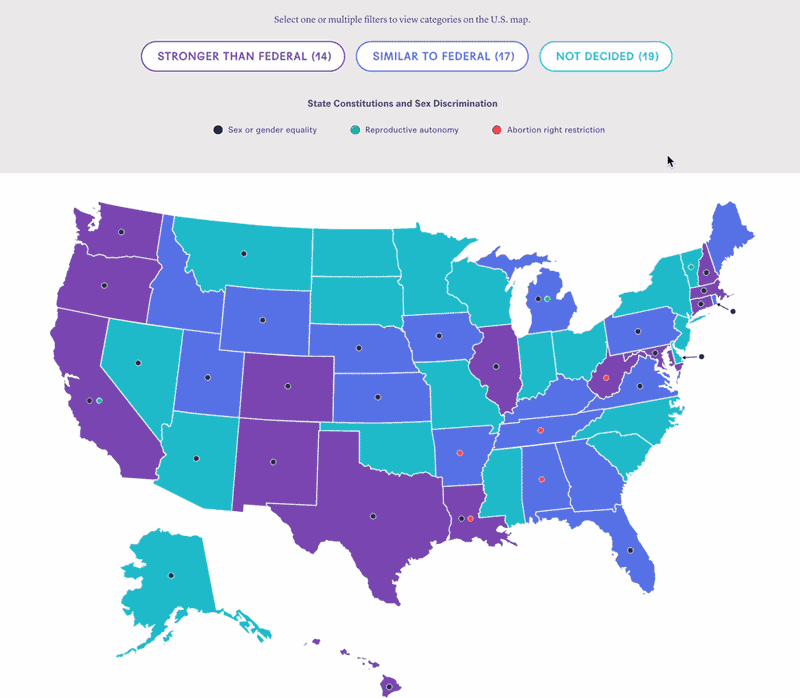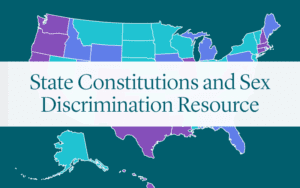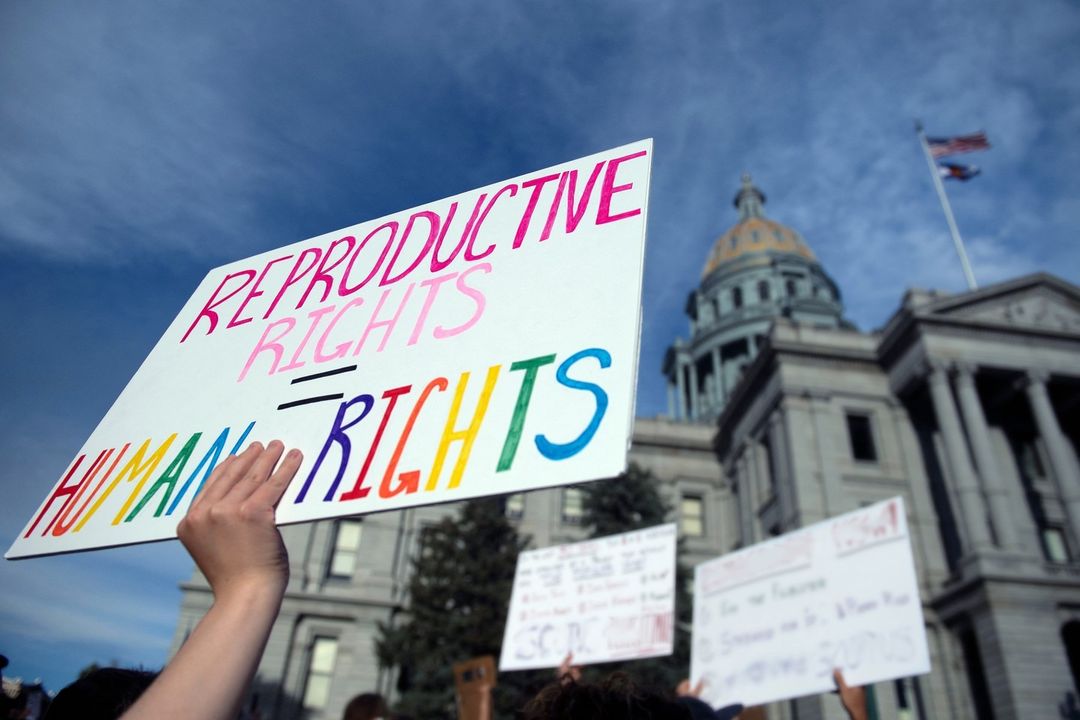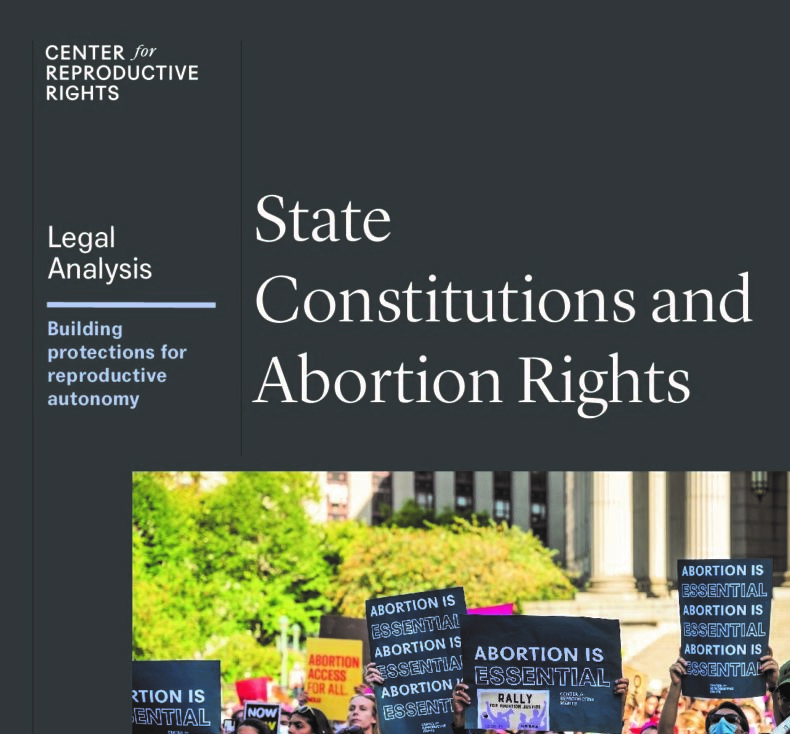New Digital Resource Assesses State Constitutional Protections Against Sex Discrimination
Interactive map outlines legal precedents and standards established in each state.
The Center for Reproductive Rights has developed a digital, map-based tool to evaluate state constitutional guarantees of gender equality and identify relevant high court decisions that offer independent protection against discrimination based on sex or subordination through reproductive control.
The new resource, State Constitutions and Sex Discrimination, explores the promise of state courts and constitutions for protecting gender and reproductive equity. This research comes at a critical moment, nearly one year after the U.S. Supreme Court’s decision to undo the federal constitutional liberty right to abortion and suggestion that state criminalization of pregnancy care is not a form of sex discrimination or a threat to gender equality.
State Constitutions and Sex Discrimination

By providing an overview of the relevant precedent in each state, the Center’s map and resource looks at each state’s constitutional doctrine on sex discrimination and draws attention to how state courts can secure more robust reproductive autonomy rights for their residents.
“Laws based on stereotypes about men, women and traditional gender roles, or that otherwise perpetuate inequality and the second-class status of women and all people capable of pregnancy, should be held unconstitutional as sex discrimination,” said Diana Kasdan, Director of Judicial Strategy for the Center’s U.S. programs. “Our new resource highlights the power of state courts to establish liberty and equality guarantees for pregnant people’s bodies and decisions.”
With an interactive map, State Constitutions and Sex Discrimination lets users click on any state to read a summary of the state high court’s constitutional precedent on sex discrimination, an analysis of how the state’s standard of review compares to the federal standard, and links to the relevant court decisions and constitutional provisions.
As explained in the new resource’s About Reproductive Autonomy section, state courts are not bound by federal precedent and can establish stronger protections under their equal protection provisions, equal rights amendments and other constitutional guarantees.
The user-friendly, accessible tool provides analysis of:
- Which specific state constitutional provisions have been held to protect against sex discrimination and/or guarantee the right to gender equality.
- What legal standards of review state courts apply when reviewing state constitutional claims of sex discrimination.
- How the legal standard of review for a state constitutional claim compares to the federal standard, including if it is stronger.
- Arguments and decisions regarding sex discrimination in cases challenging laws, policies or practices related to pregnancy or abortion.
Based on research of cases in all 50 states, the tool identifies eight states that have considered constitutional protection for gender equality in cases involving pregnancy or abortion and 14 states that have recognized that their state constitutions guarantee stronger protection for gender equality than the federal constitution. In total, 31 state high courts have considered how their state constitutions protect against sex discrimination.
The Center will continue to update the State Constitutions and Sex Discrimination map and resource to reflect substantial changes in states’ constitutional standards.
Explore the new resource here:





